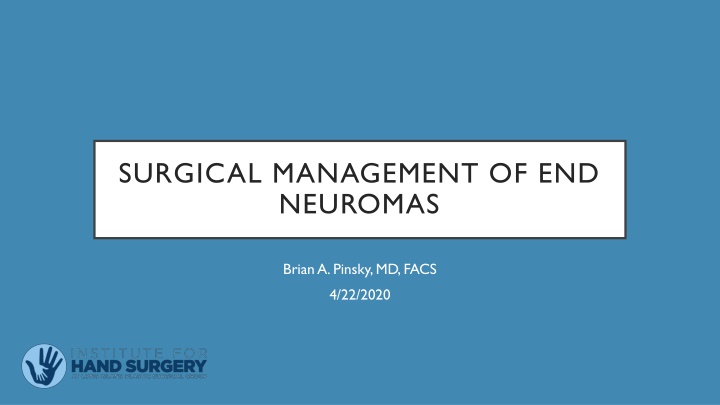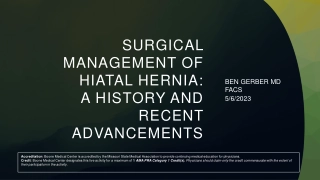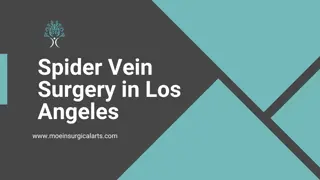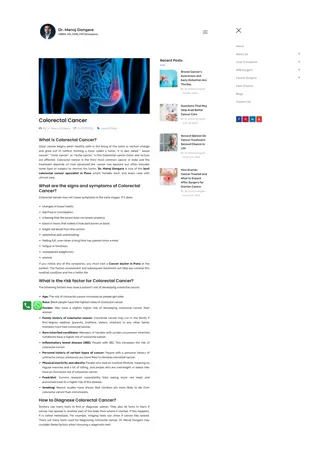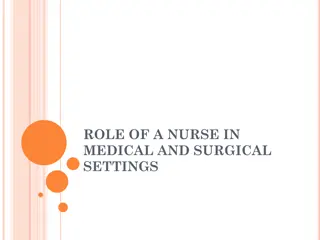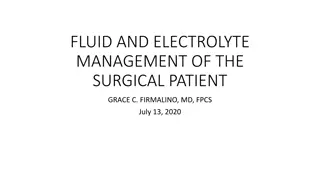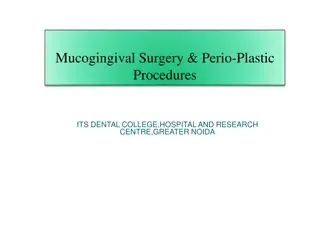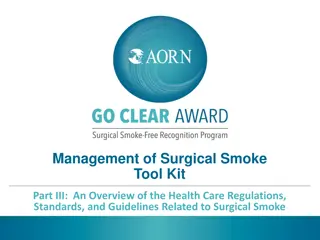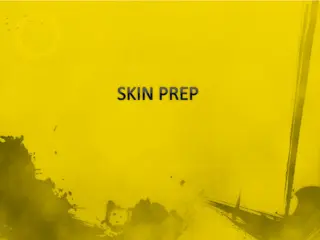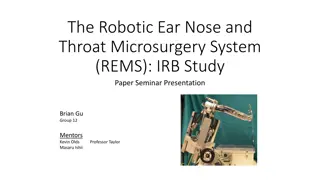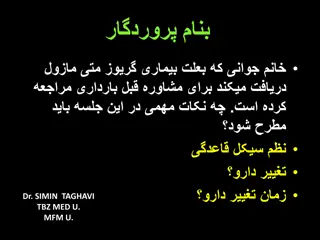Surgical Management of End Neuromas - Overview and Treatment Options
Understand the anatomy, pathophysiology, and diagnosis of neuromas, particularly end neuromas, as well as the various surgical management approaches available such as Targeted Muscle Reinnervation (TMR) and Regenerative Peripheral Nerve Interface (RPNI). Learn about the symptoms associated with neuromas and the importance of proper diagnosis for effective treatment.
Download Presentation

Please find below an Image/Link to download the presentation.
The content on the website is provided AS IS for your information and personal use only. It may not be sold, licensed, or shared on other websites without obtaining consent from the author.If you encounter any issues during the download, it is possible that the publisher has removed the file from their server.
You are allowed to download the files provided on this website for personal or commercial use, subject to the condition that they are used lawfully. All files are the property of their respective owners.
The content on the website is provided AS IS for your information and personal use only. It may not be sold, licensed, or shared on other websites without obtaining consent from the author.
E N D
Presentation Transcript
SURGICAL MANAGEMENT OF END NEUROMAS Brian A. Pinsky, MD, FACS 4/22/2020
MD Case Western Reserve University Plastic & Reconstructive Surgery Mt. Sinai Hand & Microsurgery UCLA ABOUT ME
OVERVIEW NEUROMA MGMT. 1. Anatomy & Pathophysiology 2. Diagnosis 3. Amputees 4. Surgical Management Targeted Muscle Reinnervation (TMR) Regenerative Peripheral Nerve Interface (RPNI) 5. Practice Integration
WHAT IS A NEUROMA? Physiologic response to nerve injury Distal stump Wallerian degeneration Proximal stump attempt to regenerate towards distal target
CLASSIC NEUROMA DEFINITION Disorganized whirling of large and small nerve fascicles with well myelinated fibers in a dense connective tissue stroma Sensory or mixed nerves Motor nerve do not form symptomatic neuroma
NEUROMA TYPES END NEUROMA NEUROMA-IN-CONTINUITY vs Partial nerve injury Complete disruption of nerve fibers Symptoms can depend on location of the neuroma Post surgical / post traumatic More complex treatment algorithm Treatment depends on the degree of intact function Occurs at every nerve repair coaptation Amputees Multiple treatment options Relevant to secondary reoperation
Neuropathic pain sharp or burning Numbness Paresthesias/dysesthesias Cold intolerance Electrical sensitivity NEUROMA SYMPTOMS Can be severe, debilitating, impact QOL, employment, narcotic use
DIAGNOSIS Detailed history Mechanism of trauma (sharp, crush, traction, etc.) Time course of symptom development Degree of dysfunction Prior interventions surgical history Goals of treatment Narcotic use
CLINICAL DIAGNOSIS 1. Discrete area of tenderness/tinel sign that elicits pain or paresthesias in a defined peripheral nerve distribution 2. Area of altered sensation (numbness, hypesthesia, hyperalgesia) distal to tinel s 3. Defined nerve injury 4. Positive response to proximal nerve block
IMAGING Helpful but not mandatory in every case MRI Hi-def Ultrasound
> 2 million amputees in US with chronic pain Up to 50 % develop symptomatic neuromas 5-10% disabling pain Up to 85% have phantom limb pain (PLP) End neuroma is the driver of chronic limb pain AMPUTEES Phantom limb pain - complex interplay between painful neuroma and CNS Results in cortical reorganization More difficult than neuroma pain to prevent or reverse
PHANTOM LIMB PAIN Rule of 1/4ths - 25% of established amputees experience SEVERE phantom limb pain, 25% MODERATE, 25% MILD, 25% NONE TMR decreases chronic PLP in established amputees
CENTRALIZED PAIN Peripheral pain trigger becomes amplified resulting in changes in the processing of pain signal in the brain and spinal cord Volume control of painful stimuli involuntarily turned up Also associated sx: depression, anxiety, sleep disorder Fibromyalgia Surgery helps peripheral pain but not central pain When does pain become centralized? Pain more than 6 mo after amputation is pathologic BUT Not sure, 10-20yrs? Maybe less? Medical mgmt Gabapentin, Lyrica, Cymbalta, etc Mirror therapy, Cognitive-behavioral therapy INTERVENE BEFORE THIS HAPPENS
SURGICAL MANAGEMENT
NEUROMA SURGERY No significant change in neuroma management since early 1980s Previous Gold Standard Mackinnon & Dellon 1985 Bury nerve stump into muscle Passive approach translocates the neuroma, does not address regenerative potential of proximal stump or provide neuroma-free path Attempt to bring neuroma to better microenvironment (vascularized, innervated muscle) Initial study with 82% good + excellent results, not as consistent in actual practice
First described by Dumanian in 2002 to improve the intuitive control of myoelectric prostheses active treatment after neuroma excision to satisfy need for physiologic regeneration Give the nerve somewhere to go and something to do TARGETED MUSCLE REINNERVATION
TMR Denervated target is key! Some motor fascicles reach MEP and reinnervate denervated muscle Sensory fibers reach proprioceptors, etc Establishes a new afferent signal and closes afferent- efferent feedback loop No function lost - target muscles are functionless after amputation
TMR TECHNIQUE Neuroma excised to healthy fascicles Smaller motor nerve target identified with handheld nerve stimulator Major nerve coapted tension-free to distal segment of small motor branch with 6-0/7- 0/8-0 sutures Muscle cuff for size mismatch Fibrin glue Loupe magnification
Table 2. BKA delayed (prone, 1-incision approach, posterior midline only) NERVE PRIMARY TARGETED MUSCLES LOWER LEG COMPARTMENT Lateral gastrocnemius Superficial posterior COMMON PERONEAL, POSSIBLE SPARING OF MOTOR TO TA TIBIAL Flexor hallucis longus Deep posterior MEDIAL SURAL Superficial posterior Soleus, or Medial gastrocnemius LATERAL SURAL Lateral gastrocnemius Superficial posterior Table 4. AKA (supine to prone; posterior midline, junction of proximal and middle third) NERVE PRIMARY TARGETED MUSCLES SAPHENOUS Vastus medialis PERONEAL COMPONENT OF SCIATIC Biceps femoris TIBIAL COMPONENT OF SCIATIC Semitendinosis or Semimembranosis POSTERIOR FEMORAL CUTANEOUS Biceps femoris (distal motor branch)
Transhumeral nerve transfers (anterior and posterior midline incisions) NERVE PRIMARY TARGETED MUSCLES MEDIAN Medial head of biceps ULNAR Brachialis RADIAL Lateral head of triceps MABC/ LABC Any nearby
TMR INDICATIONS CONTRAINDICATIONS Almost any end neuroma Severe comorbidities Any amputee desiring better prosthetic function Lack of available target motor fascicles Diabetic vasculopath (relative) Reduce neuroma pain Chronic limb pain for > 10-20 yrs Better results in traumatic/oncologic amputees Age not a contraindication Can be done acute, subacute, or chronic Best to do before chronic pain become centralized ~ 6 mo Subacute may be logistically easier
TMR OUTCOMES Expect increase in neuropathic or phantom pains for 2-3 months post-op Gabapentin, Pregabalin Slowly fades over time Chronic cases - Goal is for improvement, not elimination of neuroma pain Increase prosthetic use, decr pain meds, improve function and QOL Acute TMR at time of amputation reduces the odds of more severe residual limb and phantom limb pain by 3.9 and 3.0-fold, respectively
REGENERATIVEPERIPHERAL NERVE INTERFACE (RPNI) Cederna - U of Michigan Active technique initially designed to improve intuitive control of myoelectric prosthesis Animal studies show absence of neuroma formation and clinical studies show decrease in chronic limb pains and phantom limb pins
RPNI Transected nerve stump placed within free, nonvascularized muscle graft Graft ~ 30x15x5mm Nerve secured along axis of muscle fibers Larger nerve dissected into fascicular bundles Construct buried remote from surgical incision and away from weight-bearing surface
RPNI Provides distal physiologic target for axons to make new neuromuscular junctions Central feedback loop Prevents aberrant axonal growth Denervated muscle graft becomes regenerated and revascularized with axonal sprouting from implanted nerve PROS: Easier, no microsurgery CONS: No target for sensory axons
HOW DO I ADD THIS TO MY PRACTICE? Key is to understand patient flow Build strategic relationships with potential referring docs Ortho trauma, Ortho oncology, Neurosurgery, Vascular, PM&R Prosthetists Direct patient marketing support groups, message boards Logistics do you want to do at time of amputation vs. subacute
REFERENCES 1. Gart et al. Targeted Muscle Reinnervation in the Upper Extremity Amputee: A technical Roadmap. JHS 2015: 40(9): 1877-88. 2. Fracol et al. Targeted Muscle Reinnervation in the Lower Extremity: An Anatomical Study. PRS 142: 541e, 2018. 3. Dumanian et al. Targeted Muscle Reinnervation Treats Neuroma and Phantom Pain in Major Limb Amputees. Annals of Surgery 2018. 4. Kubiak et al. Prophylactic Regenerative Peripheral Nerve Interfaces to Prevent Postamputation Pain. PRS 144: 421e, 2019.
